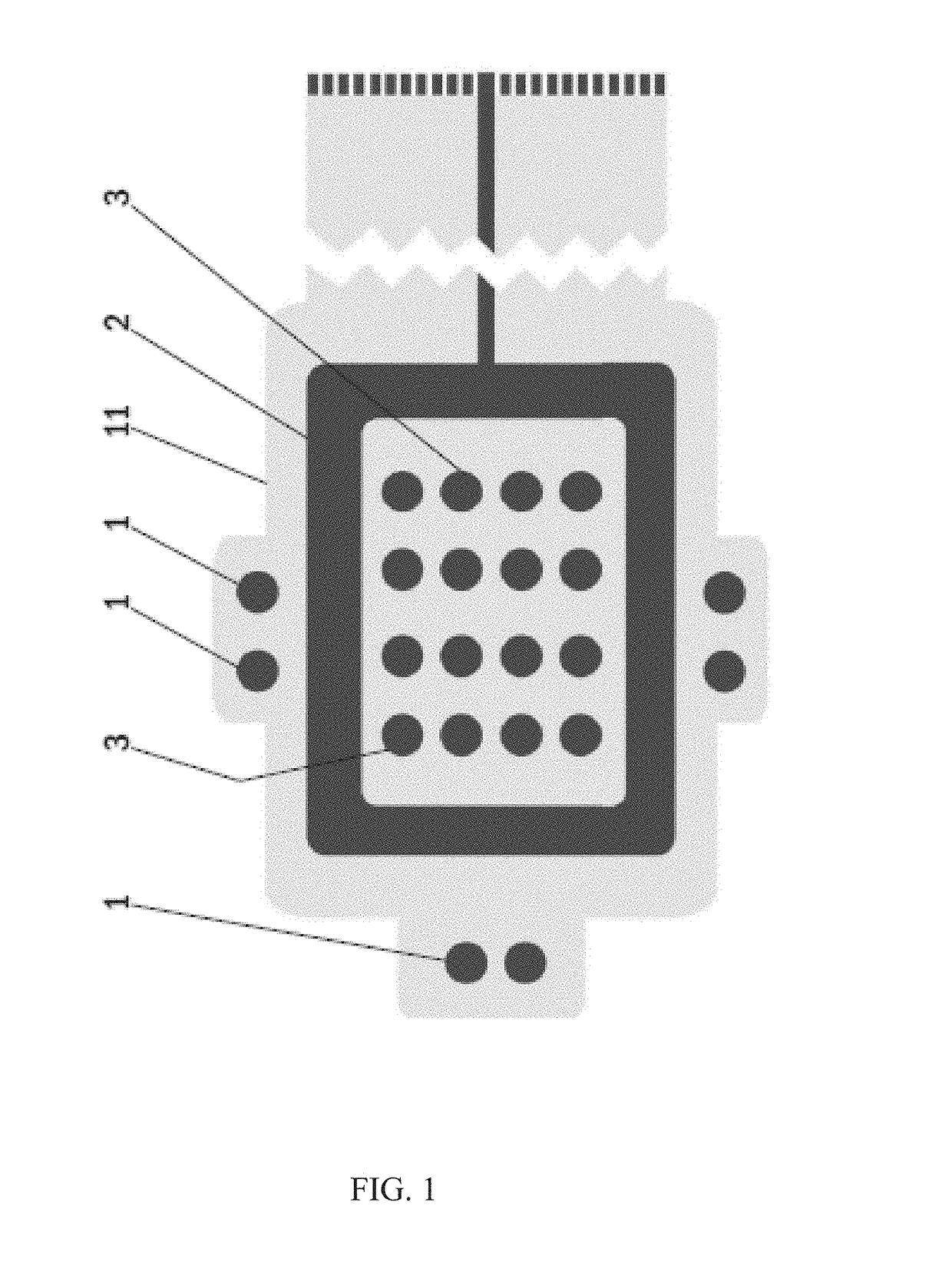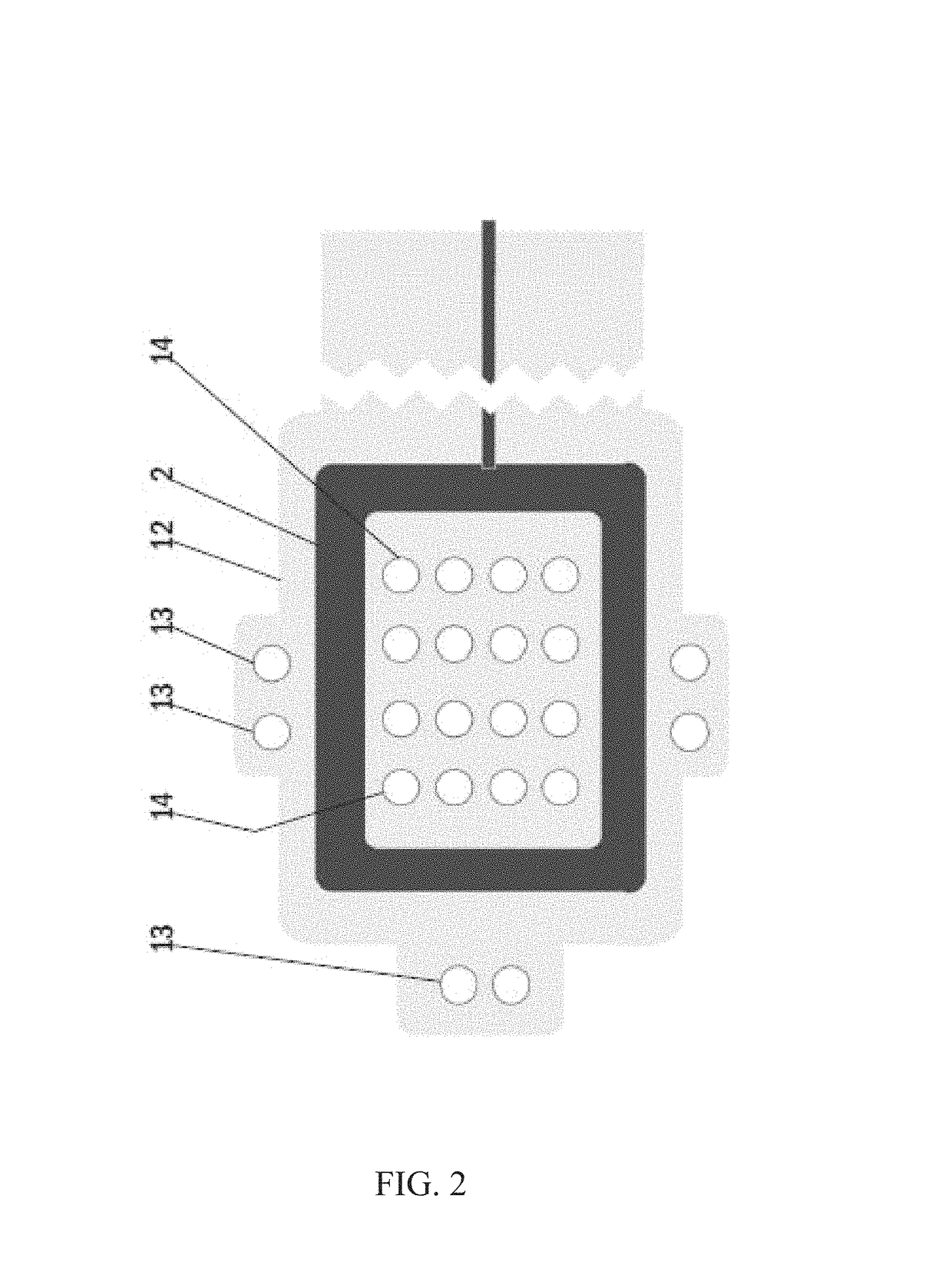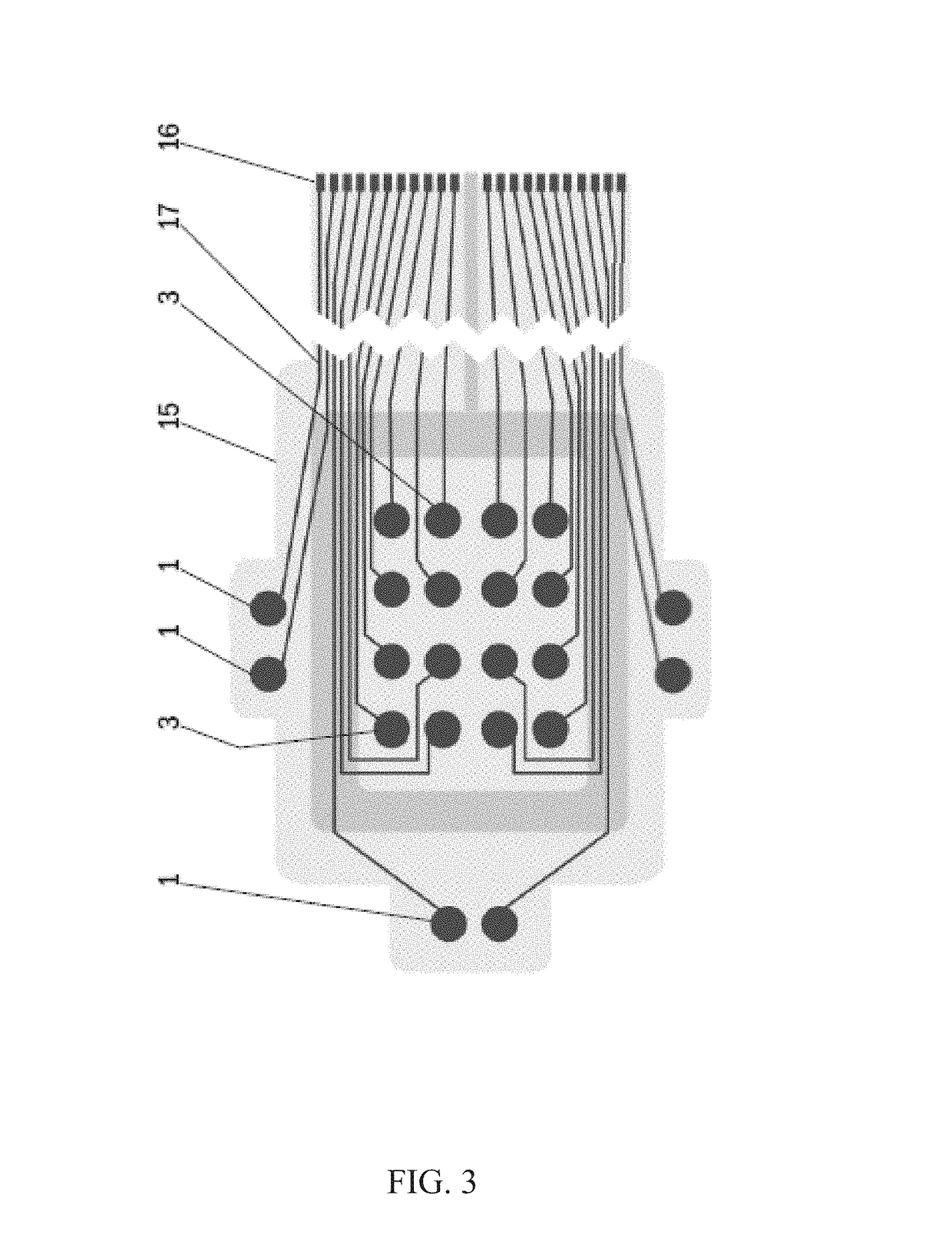Arrangement for facilitating wound healing, a method for measuring wound healing and a wound dressing
a technology for wound healing and arrangement, applied in the field of electrotherapy and measuring, can solve the problems of high financial burden for the healthcare system, large social problems of an individual patient, accumulation of highly conductive fluid, etc., and achieve the effects of improving the function of endogenous electric fields, reducing the risk of infection, and improving the risk of infection
- Summary
- Abstract
- Description
- Claims
- Application Information
AI Technical Summary
Benefits of technology
Problems solved by technology
Method used
Image
Examples
Embodiment Construction
[0050]FIG. 1 shows a bottom side view of an electrode arrangement of one embodiment of a wound dressing according to an embodiment of the present invention. The wound dressing according to an embodiment of the present invention comprises a printed substrate 11 having impedance reference electrodes 1, a frame like counter electrode 2 and stimulation electrodes 3 in a form of an array printed on the printed substrate 11. Highly conductive screen printable inks may be used as the material for the electrodes 1-3. The electrodes 1-3 and the conductor pattern may be printed directly to a paper substrate 11, polymer substrate 11 or composite substrate 11 functioning as the wound dressing laminate. Another alternative is to etch the electrodes 1-3 and the conductor pattern on top of a suitable layer of plastic laminate 11, metal laminate 11 or a composite laminate 11 and attach this etched laminate layer 11 to a paper substrate, polymer substrate or composite substrate functioning as the wo...
PUM
 Login to View More
Login to View More Abstract
Description
Claims
Application Information
 Login to View More
Login to View More - R&D
- Intellectual Property
- Life Sciences
- Materials
- Tech Scout
- Unparalleled Data Quality
- Higher Quality Content
- 60% Fewer Hallucinations
Browse by: Latest US Patents, China's latest patents, Technical Efficacy Thesaurus, Application Domain, Technology Topic, Popular Technical Reports.
© 2025 PatSnap. All rights reserved.Legal|Privacy policy|Modern Slavery Act Transparency Statement|Sitemap|About US| Contact US: help@patsnap.com



